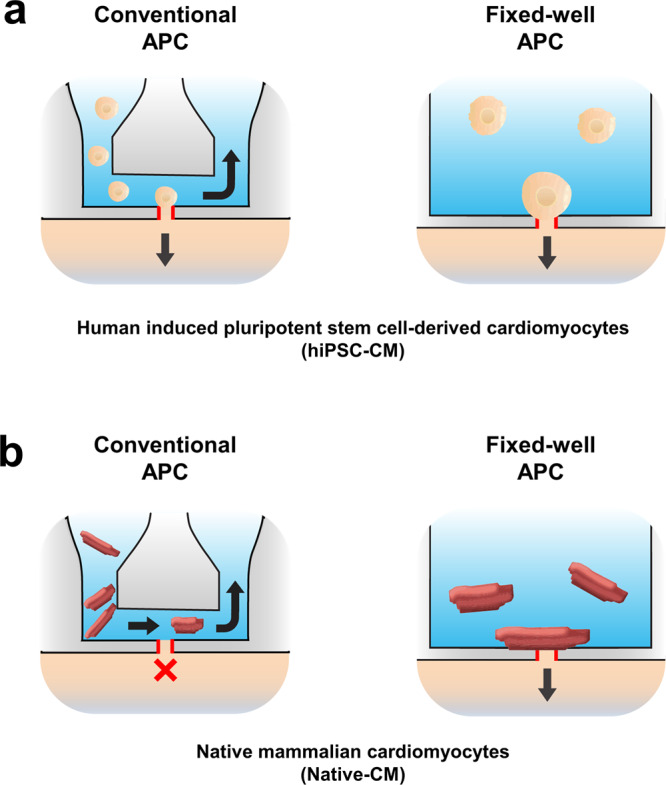Fig. 1. Simplified cross-sectional schematic of conventional microfluidic automated patch-clamp (APC) and fixed-well APC during assays with cultured cellular systems such as human induced pluripotent stem cell-derived cardiomyocytes (hiPSC-CM) or native mammalian cardiomyocytes (Native-CM).

a Schematic of hiPSC-CMs within APC systems. In a microfluidic APC system, cells and external bath solution are pipetted into the inlet well and travel through the channel to settle on the patch-clamp aperture (outlined in red). Waste liquid sequestration allows for fast flow-through perfusion and drug application (lateral arrow). In a fixed-well APC system, cells and bath solution are pipetted into the chamber and through gravity and suction are allowed to settle on the patch-clamp aperture (outlined in red). b Native cardiomyocytes within a microfluidic system cannot successfully reach or settle on the patch-clamp aperture due to size, sample debris, or high resistance channel-enhanced fluid velocity. These features are not present in a fixed well APC chamber. Cleanly isolated Native CMs can settle on the patch-clamp aperture for adequate seal formation and electrophysiological investigation.
